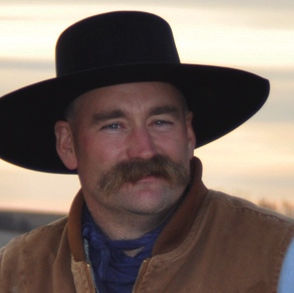Throughout the course of human records, the great slaughter of humans has come through government policies that restrict food production and lead to starvation. Today the global infrastructure of food production has been crippled beyond belief. Here at home, we see landowners anxious to sign away property rights for perpetuity in the name of a “conservation easement.”
We are living through a daily barrage of rhetoric about how the problem for our future is the farmer. And to make matters worse we have some, such as part of the ethanol industry, that are only making the government overreach even worse. Let me be clear, I am not, nor have I ever been “anti-ethanol.” In fact, I have promoted that we need to produce more. What I am against is anything that contributes to the “collective farming” approach. Let me share a brief period in history.
Information from 17 moments in Soviet History from Michigan State University available at soviethistory.msu.edu.
“Joe Stalin’s enthusiasm for collectivization seems to have been based on two cardinal principles that many in the party and at least some agrarian experts shared. One was that large units of production, organized along the lines of industrial enterprises and with access to mechanized equipment, were far more efficient and would permit the extraction of greater surpluses than the traditional strip farming practiced by Russian peasants. The other was that kulaks represented a counterweight to Soviet power in the villages and by their very nature constituted a ‘class-alien’ element that had to be eliminated. It followed from this that so-called middle peasants who, again by their very nature, wavered between supporting state initiatives and opposing them, could be won over to collective farming by a combination of inducements (access to mechanized equipment, credits, etc.) and coercive measures (taxes, confiscations, threats of exile). Thus, collectivization was to proceed in tandem with ‘dekulakization.’
“How did peasants initially respond to the idea of collectivization? Party agitators sent to the villages to persuade peasants of the benefits of collectivization often met with skepticism and mockery. Peasants who resisted the pressure of regional party officials to enroll in collective farms were labeled as kulaks; those who feared confiscation sold off their property as quickly as they could, in effect self-dekulakizing. By June 1929 one million—out of some 25 million—peasant households had been enrolled in 57,000 collectives. Still, the majority held back. The most intense period of collectivization was during the winter of 1929-1930 following the publication in Pravda on the twelfth anniversary of the October Revolution of Stalin’s article announcing a ‘great breakthrough’ on the road to ‘winning the vast masses of the peasantry to the side of the working class.’
“On January 5, 1930, the Central Committee issued its decree calling for collectivizing not merely the 20 percent of arable land envisioned in the First Five-Year Plan, but ‘the huge majority of peasant farms’ in the most important grain-growing regions by the autumn of 1930. Workers enrolled in brigades to assist in collectivization (the ‘Twenty-Five Thousanders’) were dispatched to the villages with great fanfare, as if they were going off to war. Much was made in propagandistic newsreels of ‘kulak resistance’ and successful searches and confiscations carried out by the police and party officials. Those identified as kulaks were subjected to confiscation and either local resettlement, deportation, incarceration in labor camps and in case of the most dangerous ‘elements,’ execution. By March 1930 an estimated 55 percent of peasant households at least nominally had enrolled in collective farms. At this point, however, Stalin decried the excesses of local officials, claiming they were ‘dizzy with success.’”
The mass starvation that occurred because of this collectivism reportedly claimed up to 10 million lives. If you want to go digging through these facts, search by its most common name, Ukrainian Famine.
Editor’s note: The views expressed here are the author’s own and do not represent the views of High Plains Journal. Trent Loos is a sixth generation United States farmer, host of the daily radio show, Loos Tales, and founder of Faces of Agriculture, a non-profit organization putting the human element back into the production of food. Get more information at www.LoosTales.com, or email Trent at [email protected].



